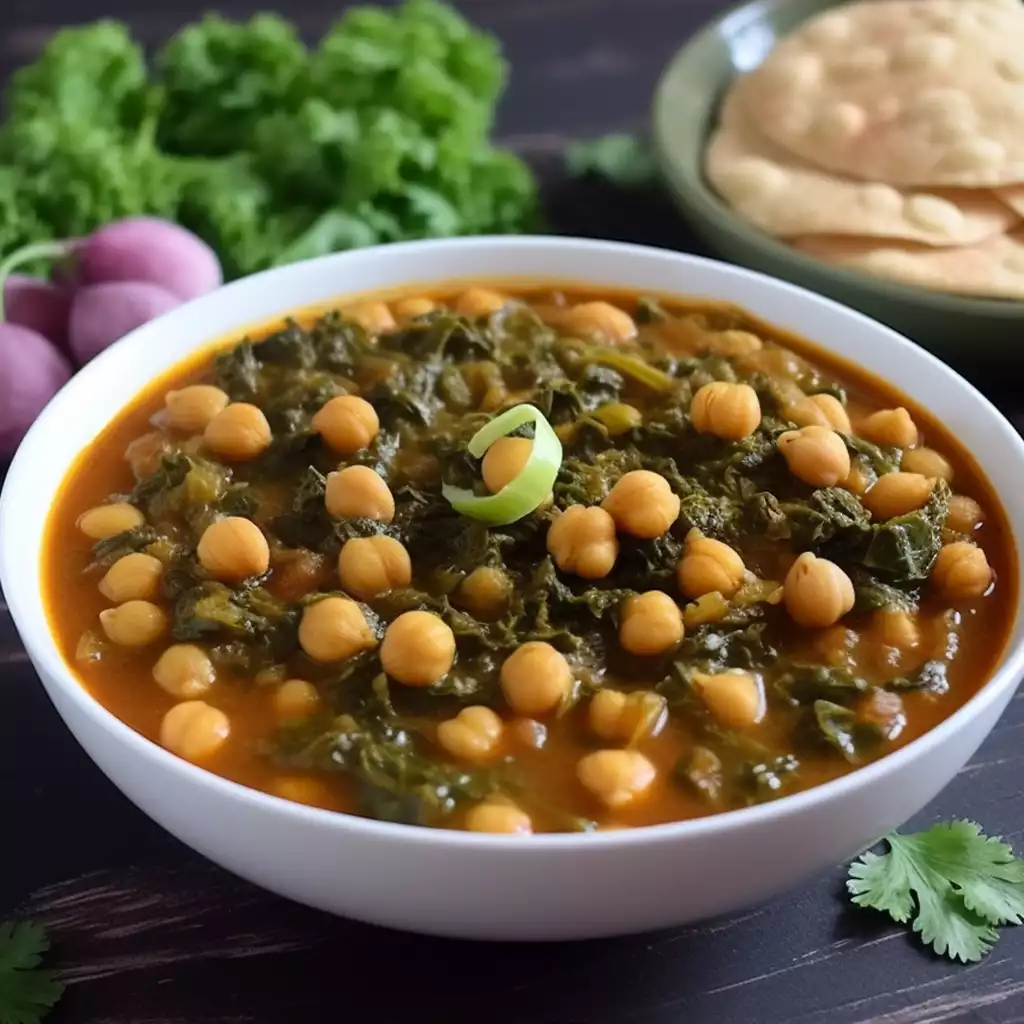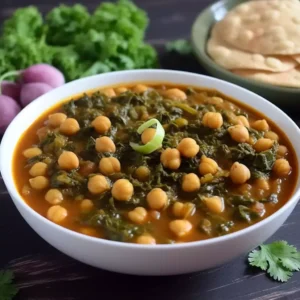
Palak Chole is a delightful fusion of two iconic Indian dishes – chickpea curry (chole) and spinach curry (palak).
This vibrant and nutritious recipe brings together the earthy flavors of chickpeas with the freshness of spinach, creating a wholesome and satisfying meal.
Originating from the northern regions of India, this dish has gained popularity for its rich taste and health benefits. Despite its seemingly complex flavors, Palak Chole is surprisingly easy to prepare, making it an ideal choice for both novice and seasoned cooks alike.
Expert Tip: For a creamier texture, you can blend a portion of the cooked chickpeas before adding the spinach for a thicker consistency.
Chickpeas: Canned chickpeas, drained and rinsed, form the hearty base of this dish, providing protein and a satisfying texture to the curry.
Spinach: Fresh spinach, washed and chopped, adds a burst of vibrant green color and a nutritious boost to the recipe.
Onion, Tomatoes, Garlic, Ginger, Green Chili: These aromatics form the flavor foundation of the dish, lending their distinct tastes and textures to the curry.
Cumin Seeds, Ground Coriander, Ground Cumin, Turmeric Powder, Paprika, Garam Masala: A blend of aromatic spices enhances the flavor profile of Palak Chole, infusing the dish with warmth and depth.
Salt: To taste, to balance the flavors and enhance the overall taste of the dish.
Vegetable Oil: Used for sautéing the aromatics and spices, adding richness and depth to the curry.
Fresh Coriander: Garnished on top, fresh coriander leaves provide a final touch of freshness and color to the dish.
Expert Tip: Experiment with different spices and adjust according to your taste preferences. Adding a pinch of cinnamon or fenugreek can add depth to the flavor profile.
Expert Tip: To enhance the nutritional value of the dish, you can add other vegetables such as diced carrots or bell peppers along with the spinach.
Freshly cooked chickpeas can be used in this recipe, but they will require longer cooking time compared to canned chickpeas. Make sure to soak and cook the chickpeas until they are tender before adding them to the curry.
The spiciness of Palak Chole can be adjusted according to personal preference. You can control the amount of green chili or omit it altogether for a milder flavor.
Yes, Palak Chole can be prepared in advance and stored in the refrigerator for up to 2-3 days. Reheat gently on the stove or in the microwave before serving.
While Palak Chole can be frozen, the texture of the spinach may change slightly upon thawing. It’s best enjoyed fresh or refrigerated for later consumption.
If spinach is not available, you can substitute it with other leafy greens such as kale or Swiss chard. Adjust cooking times accordingly as different greens may require varying cooking times.
Here are some more recipes for you to enjoy! If you my recipes don’t forget to rate and leave a comment.
If you have any recipe suggestions, please do not hesitate to ask me. A great way to stay in contact with me is through Instagram, Facebook, Twitter and YouTube. Don’t forget to tag me @CookwithNabeela in your recipe photos!

Subscribe now to receive my latest recipes directly in your inbox. Stay up-to-date and never miss out!

I love to cook! I want to share with you my favourite, delicious family-friendly recipes. I want to inspire you to create fantastic food for your family every day.
Add your first comment to this post